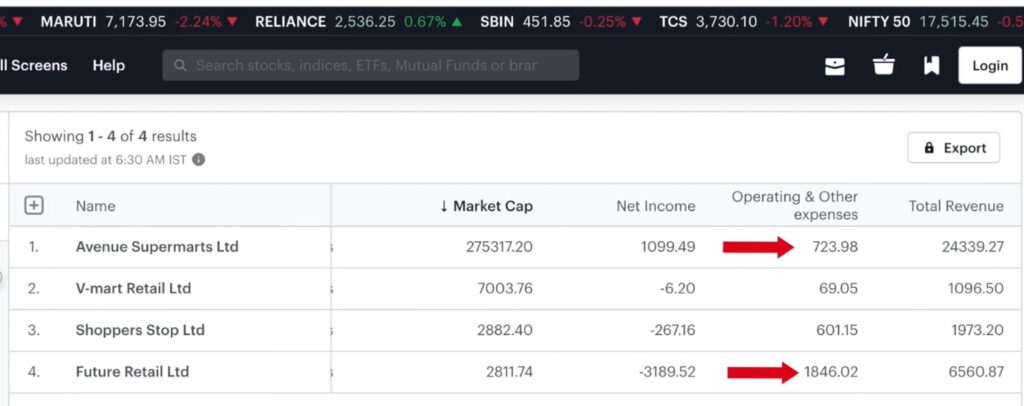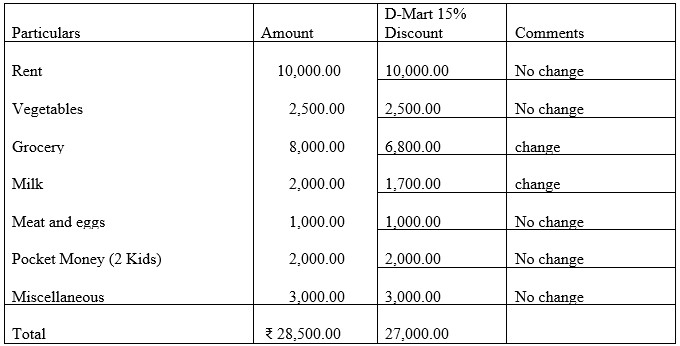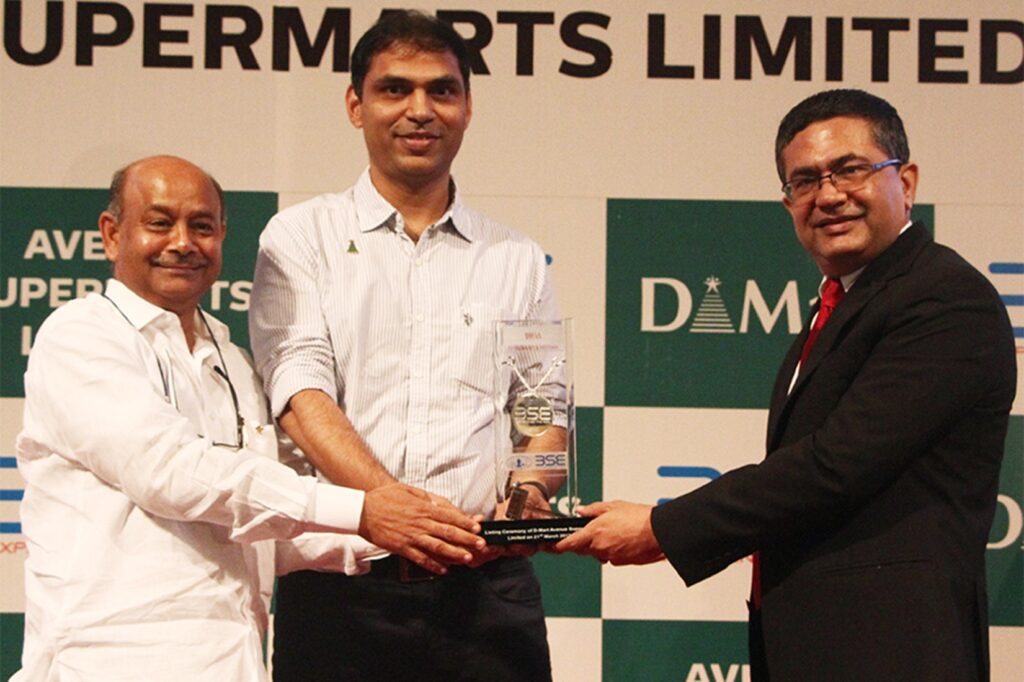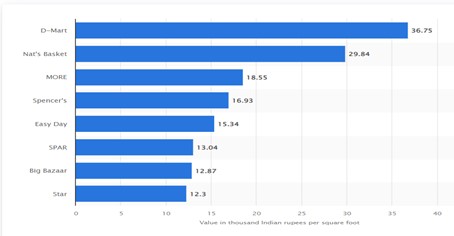D-Mart, the most known and India’s largest retailer operates a chain of hypermarkets in India. It currently has more than 300 stores in 100 cities across 14 states. It was founded by Radhakishan Damani in 2002 and is promoted by Avenue Supermarkets Ltd (ASL) and, the headquarters of the company is situated in Mumbai. As of December 2022, the market capitalization of D Mart is $30.29 billion, making it the 555th most valuable company in the world. The chain aims to offer its customer a wide range of products under one roof and that too at such an affordable rate. D-Mart has been growing exponentially over the years, since its launch of IPO in 2018.
The price of each share back then was Rs. 616, which has now grown to Rs. 4050 which is around 500% growth in just a span of 5 years, and that too not even a single store has been closed in these 20 years of business. Now, the question arises of how D-Mart was able to achieve so much more than other retail chains like the Future group, Reliance retail, etc. What made D-Mart stand out in comparison to its competitors?

Understanding Where D-Mart made its mark?
1.Price Price Price!!
D-Mart made its price lower than that of Kirana stores and other retailers. They give around 6-15% discount on most of the products they sell. The question arises, how this meager discount even matters? But it does matter, this can be understood with the help of a sample budget, Let’s take the salary to be 35000 per month in a Tier-2 city.
Savings in the first case are 35000 – 28500 = 6500 which is 19.4% of savings out of total income and if we take the second case 35000 – 27000 = 8000 which is 22.8% savings. Thus, it matters to every lower-middle-class Indian family. Just imagine this on a greater scale, and the percentage of savings will increase.

2. Deep Discounting
Deep discounting in business simply means purchasing products in huge quantities and asking for discounts on each unit. By doing this D-Mart was able to maintain strong relations with its suppliers in terms of their order purchase and fast payment and at the same time, it was able to maintain its relations with customers by offering them at a lower price.
Let’s take an example of this –
Aashirvaad Atta is sold at ₹280 for a 5 kg packet.
Let’s say a Kirana Store buys 500 packets @ ₹250 per pack packet, here the total sales to the wholesaler will be (500 X 250) i.e., ₹125000 and he will sell the customer at ₹280 per packet but at the same time if D-Mart buys 5000 packets, but D-Mart will ask for a discount since it is buying more units, so let assume D-Mart buys at ₹220, here the sale to wholesaler will be (5000 X 220) i.e., ₹11,00,00 that means the wholesaler or the manufacturer gets more sales and D-Mart, on the other hand, can sell the same packet at ₹250 – ₹260 to its customers. This gives D-Mart bargaining power with that of its sellers.

3. D-Mart’s Competitive Strategy
This strategy is a combination of three components – Careful, Non-fancy, and Ownership. The company has been very customer-focused from the very beginning. If we look at the number of D-Mart stores they are only 302, despite being in the market for 20 years now compared to Big Bazaar, which has over 350 stores and Reliance Retail has more than 11000 stores. They understand the customer’s mind, demands, and expectations before opening any new store. That is how they build their operational efficiency, and good relations with the customers and the suppliers. That is the only reason not even a single store has been closed since its inception in 2002 compared to its competitors who open and close stores whenever they feel any disruptions happening.

4. Store Ownership Model
D-Mart has followed a different strategy when it comes to Store ownership. What they do is buy land and build their entire premises there. Now, we might think that it might be a costly process, but what the numbers say is totally different. If we take 2017 numbers from when Future Retails was at its peak, they spend around 8% of their income on rent, HyperCity spent around 5%, Reliance Retail around 3.5%, and D-Mart spends just a meager 0.20% on rent.
The location where they are located also matters a lot. If we see a D-Mart store, they are mainly located in nearby localities, where it is accessible to the masses, rather than opening their store in prime areas like that of a mall. Furthermore, if we look at the ambiance of D-Mart stores they are not as fancy as we see in other retail outlets. That is when if we look at revenue per square feet just before the E-Commerce boom in 2016, for Future Retail it was near to ₹13,000, Reliance Retail was nearly ₹14,000, and at the same time, D-Mart was at ₹25,000 per sq. ft and if we look at its profitability for Reliance Retail it is ₹232, for Future Group it is ₹252 and for D-Mart, it is whopping ₹950.
As a result, D-Mart’s status as the retail king of India may be attributed to these elements, which include price, deep discounting, customer focus, store ownership, and location. These factors combine to set D-Mart apart from competitors.
Written by: Irfan Ali
Edited by: Irfan Ali
